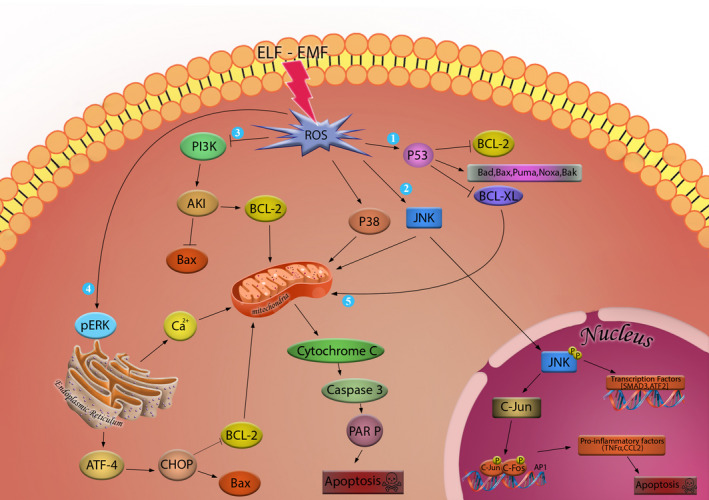FIGURE 1.

ROS‐mediated apoptosis signalling pathways: (1) Accumulation of ROS affects p53 protein which in turn inhibits Bcl‐2 and Bcl‐XL proteins function and promotes the activity of Bad, Bax, Bak, Puma and Noxa proteins. (2) ROS can induce phosphorylation of JNK. Phosphorylated JNK can activate transcription factors such as SMAD3 and ATF2. Phosphorylated JNK can also translocate to the nucleus and activate C‐Jun phosphorylation which in turn can activate transcription of several pro‐apoptotic factors. (3) Accumulation of ROS inhibits PI3K‐mediated activation of AKT. (4) Accumulated ROS promotes ER stress and expression of CHOP through activation of ATF‐4 which in turn can promote Bax activity and inhibit Bcl‐2. (5) All these pathways end in the release of cytochrome c which in turn can activate caspase 9 and caspase 3 and result in cleavage of PARP and induction of apoptosis
